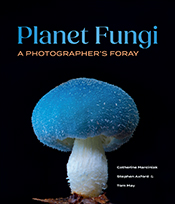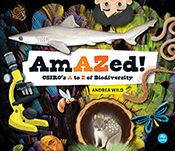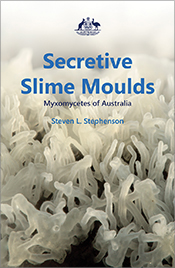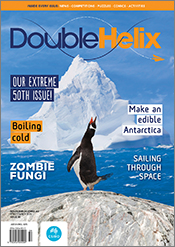Planet Fungi
A Photographer's Foray
By: Catherine Marciniak, Stephen Axford, Tom MayA fungal feast for the eyes, with stunning imagery accompanied by fascinating science stories.
Fungi are nature’s great networkers, weaving connections, driving transformation and thriving in the most unexpected places. Planet Fungi: A Photographer’s Foray is a feast for the eyes, with stunning imagery and pioneering explorations that reveal the intricacies of fungal biology and their ecological significance. + Full description
It was a chance encounter in the forest with a purple mushroom that completely changed photographer Stephen Axford’s view of the world. He became obsessed with documenting the largely unexplored kingdom of fungi and, alongside his partner, Catherine Marciniak, capturing the beauty and diversity of fungi in some of the most remote regions on Earth. There are an estimated 2–5 million species of fungi found all over the world, yet with only around 155,000 described so far, there is so much left to discover.
From glowing mushrooms in ancient forests to bizarre, alien-like forms, these extraordinary organisms will challenge how you see the natural world.
“A stunning exploration of a hidden world. These are among the most remarkable images of fungi I’ve ever seen, woven into relation by a series of writings that beautifully illuminate the mysteries and wonders of fungal life.”
– Merlin Sheldrake, author of Entangled Life
“A wondrous journey through epic fungal encounters, with sublime photography and beautiful tales.”
– Giuliana Furci, Founding Director, Fungi Foundation
News
Sales in Australia, New Zealand, Oceania and the Americas only. Elsewhere, this title is available through CABI (external link).
Details
Hardback | August 2025 | $ 59.99ISBN: 9781486318186 | 320 pages | 276 x 237 mm
Publisher: CSIRO Publishing
Colour photographs
Features
- Presents a fungal feast for the eyes with stunning imagery accompanied by fascinating science stories, making the often hidden world of fungi accessible for everyone.
- Features incredible macro-photography from internationally renowned fungi photographer and fungi hunter Stephen Axford.
- Details the discovery of species new to science, explains how fungal life is critical to the planet’s resilience in the face of climate change and recounts stories of fungi safaris to some of the most remote forests on the planet, including in Australasia, Asia and South America.
Contents
Authors' notesDisclaimer
Acknowledgements
About the authors
How fungi changed my view of the world
Traders, undertakers and executioners
Fungiphilia
Lichen love
Safari to the end of the world
Glowing in the dark
In the shadow of the Himalayas
New discoveries
Everything is connected
Glossary
Endnotes
Index
Authors
Catherine Marciniak is an award-winning documentary filmmaker, photographer and journalist with over 80 hours of television credits, multi-screen exhibitions and numerous articles. She co-wrote the IMAX documentary Fungi: Web of Life and directed and co-produced Follow the Rain, exploring the world of fungi. As a features reporter with the Australian Broadcasting Corporation, she is a two-time finalist in the Walkley Awards for Excellence in Journalism.
Stephen Axford is renowned for his macro fungi photography, which has been featured in publications and exhibitions worldwide. His fungi time-lapses appear in award-winning documentaries such as Planet Earth 2, Hostile Planet, Our Planet, The Kingdom, Fantastic Fungi and the IMAX documentary Fungi: Web of Life. He co-writes and presents Planet Fungi’s video productions, including their latest feature documentary Follow the Rain, capturing the intricate beauty of fungi globally.
Dr Tom May, mycologist at Royal Botanic Gardens Victoria for nearly three decades, has a distinguished research career and a passion for communicating and educating about fungi. Former President of Fungimap, he co-authored FunKey and Wild Mushrooming: A Guide for Foragers. His contributions, spanning science and citizen science, have been recognised by award of the Nancy T. Burbidge Medal and the Australian Natural History Medallion.








